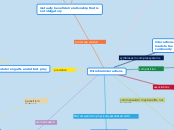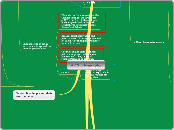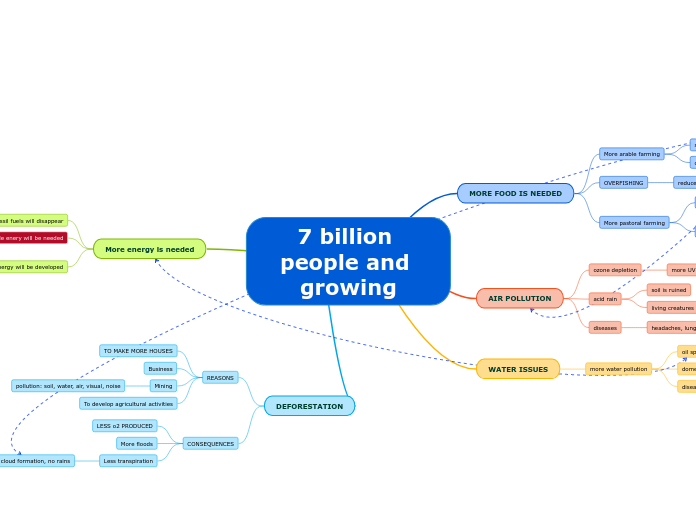Invasive Species: Feral cats when
introduced to many parts of the world to reduce rodent pop. end up reproducing without having their pop. to be controlled by natural predators. Cats were introduced to control rodents in Hawaii and are now one of the greatest threats to biodiversity. They have lead to the extinction of hundreds of species on the island already, including various birds and rodent population
Coelom (Body Cavity)
Coedom
- True body Cavity
- Organs are held together by a mesentry
Pseudocoelomate
- "False"
- There is a body cavity but not real
- Suspended body cavity
-Changes depending on how they are relying
Acoelomate
- No body cavity
- Platyhelminthes
- Flatworm
Domain of Life
Archaea
- Archaea constitute a domain of single-celled microorganisms. These microbes are prokaryotes, meaning they have no cell nucleus.
Archeabacteria
- Prokaryote
- Cell walls without peptidoglycan
- Unicellular
- Archaeans include inhabitants of some of the most extreme environment on the planet
- Archaebacteria are found in extreme environments such as hot boiling water
- and thermal vents under conditions with no oxygen or highly acid environment
Ex. Thermoplasma acidophilum
Bacteria
- Bacteria lack a membrane-bound nucleus
and other internal structures and are therefore ranked among the unicellular life-forms called prokaryotes
- microscopic single-celled organisms
Eubacteria
- Prokaryote
- Cell walls with peptidoglycan
- Unicellular
- Have been classified by shape
- Like archaebacteria, eubacteria
are complex and single celled.
- They are the kinds found everywhere and are the ones people are most familiar with.
- Most eubacteria are helpful. Some produce vitamins and foods like yogurt. However, these eubacteria, Streptococci pictured above, can give you strep throat
Ex. Staphylococcus,
Salmonella
Spirillum
Bacillus
Coccus
Eukaryota
Eukaryota:
The Eukaryota include the organisms that most people are most familiar with - all animals, plants, fungi, and protists. They also include the vast majority of the organisms that paleontologists work with. Although they show unbelievable diversity in form, they share fundamental characteristics of cellular organization, biochemistry, and molecular biology. Shown here, clockwise from upper left: a dinoflagellate, a single-celled photosynthetic protist
; a palm tree representing the plants
; a spider, one of the animals
; and a cluster of mushrooms representing the fungi
Animalia
Animals are defined as:
- heterotrophic
- diploid
- multicellular
- usually (except sponges) develop from a blastula
- multicellular embryo that develops from diploid zygote
- produced by fertilization of a large haploid egg by a smaller haploid sperm,
- is unique to animals.
Chordata
- Dorsal nerve cord
- Notochord
- Paired gill slits
- Posy-anal tail
- Deutreusome
Cephalochordates
- Filter feeders
- biologists believe the ancestors of vertebrates resembled these animals
Tunicates
- motile larvae display the chordate characteristics
- sessile (immobile) adult retains the pharyngeal apparatus
Urochodate
Vertebrates
- Animals have backbone
- anterior part of the dorsal hollow nerve cord is enlarged into a brain
- head, neck, and trunk
- presence of a tail
- A jointed internal skeleton
- Two pairs of appendages
Agnathans
- No jaws
- Sucks tissue + blood
- No hinged jaw
- notochord persists into the adult animal
Cyclostomata
Lamprey
Gnathostomata
Tetrapoda
•The amniotic egg
• Internal Fertilization
• Water tight Skin
• Other Adaptations
Amphibia
Larvae heart 2 chambered,
Adult heart 3 chambered
Gills. lungs and skin used in respiration
Salamander
Toad
Frog
Reptilia
Garden Lizard
Snake
Alligator
Aves
ability to survive on land
Peigon
Sparrow
Mamalia
• Presence of hair
• 4 chambered heart
• Mammary glands on females (lactation)
• 3 middle ear bones
• Viviparous
• Endothermic
Plancental Orders
- Young nourished by placenta
Mice
Marsupials
•Small immature fetus
- Give birth to live young
- Mammals have pouch where their young grows and develops
Kangroo
Monotreme
•Egg layers
• Spiny Anteater, Duck Billed Platypus
Warm blooded
produces milk
- Do not give birth to live young
- Keeps the eggs for the longer period - to provide nutrients to the egg
Echidna
Pisces
Osteichthyes
bony fish
Catfish
Chondricthyes
cartilaginous fishes: they are jawed vertebrates with paired fins, paired nares, scales, a heart with its chambers in series, and skeletons made of cartilage rather than bone.
Shark
022
- Deuterostomes (mouth first and anus develops from blastopore)
- Radial - 5 part symmetry
- Bilateral symmetry as a larva (2)
- Vascular skeleton
Arthropoda
Myriapoda
- Elongated segmented body with numerous paired, jointed legs, formerly classified as a class comprising the centipedes and millipedes
- Many legs
Ex. Millipede, Centipedes
Crustacea
- Large and diverse group
- Characterized by having mandibles and compound eyes, biramous appendages
- Mostly living in aquatic habitats
- Biramous appendages
Ex. Crabs, shrimps, lobsters, crayfish, and etc
Maxillopoda
Ostracoda
Brachiopoda
Malacostra
Hexapoda
- Body divided into head, thorax, abdomen
- Uniramous appendages
- One pair of antenna (unbranched)
- Most with wings
- 3 pair of walking legs
- Go from larva to adult
Entognatha
Insecta
Chelicerates
- Six pair of appendages
- Chelicerae and pedipalps mouth parts
- No mandibles and no antenna
Ex. Spiders, scorpions, ticks, mites, harvestmen and etc.
Pycnogonida
Aranae
Scorpionidae
Acari
Merostomata
Arachnida
- 2 body segment
- 8 Legs
- No antenna or wings
Ex. Spiders, scorpions, ticks, mites,
Mollusca
- Body plan
- shells
- foot
- coelom
- mantle
- Protostomes (anus first and mouth develops from blastopore)
Bivalves
- Two-part shells
- No head
- Powerful foot to burrow
Scallops
Oyster
Clams
Cephalopod
- Fast moving and intelligent predators
- Excellent vision
- Foot modified into tentacles
- Move by jet propulsion
- the concentration of sense organs, nervous control, etc., at the anterior end of the body, forming a head and brain, both during evolution and in the course of an embryo's development.
Octopus
Gastropod
Slugs
Snails
Annelida
- Digestive tract
- Body segmentation
- Coelom
- Closed circulatory system
Leech
Oligochaete
Polychaete
Earthworm
Nematoda
- Unsegmented worms
- Bilateral symmetry
- Pseudocoelom ("false coelom")
- body cavity contains organs
- Complete digestive tract
Roundworms
- worm grows in intestine of human host a forms cysts in the muscles
Platyhelminthes
- Can be free living or parasitic
- Bilateral symmetry (2) with a head and a tail
- Cephalization (has a head)
- Centralized nervous system
- No circulatory system and no hard skeleton
Flatworms
- Can move in 2 ways either by cilia or muscle cells
Cnidaria
- True tissue
- Tentacles
- Basic tissue layers in the embryo
-oragan + tissue
-ectoderm, mesoderm, endoderm
- 2 tissue layers
- Radial symmetry - symmetry around a central axis
- 2 body forms
•Medusa (cup)
•polyp (vase)
- Cnidocytes (stinging cells)
- Nematocysts (prickly barbs)
- Gastrovascular cavity (digestion)
Scyphozoa
True jellyfish
Hydrozoa
Fire corals
Hydroids
Cubozoa
Box jellies
complex eyes and potent toxins
Anthozoa
Sea Pens
Anemones
True corals
Porifera
- Multicellular
- No mouth
- Heterotrophic
- Without true tissue
- Sponges
- Asymmetrical- lacking symmetry
- Look like plants
- Collar cell- creates wave to pull food
- Reproduce *Releases sperm+egg
Ex. Sponges
Sponges
- Can be sessile - do not move
- and get food by filter feeding
Plantae
Plants:
- multicellular
- Photosynthetic
–Contain chlorophyll a and b
- Alternation of Generations
- develop from embryos
–arise from multicellular structures in the maternal tissue
-indicating that all plants (even though this is not actually true) have a sexual stage at some point in their life cycle
- Use chlorophyll to produce their own food
Vascular Plants
Seedless Vascular
- vascular tissue
- moist habitats
- have leaves called fronds
- sporophyte is the dominant part of the life cycles
- gametophyte is much reduced
- The gametophytes are not free-living
–retained within the reproductive tissues of the sporophyte
- Pollination replaces the sperm cell swimming to the egg
- Drought-resistant pollen is carried to the female tissues by wind or animals.
- The zygote is protected in a seed
- –The seed can be dispersed, unlike the zygote of non-seed plants
Lycophyta
- oldest lineages of extant vascular plants and contains extinct plants
Club mosses
Pterophyta
- Vascular Plant
- Produces by spores
horsetails
Whisk ferns
Fern
- With roots
- Vascular System
- Transports fluid
- Main Phylum
- Have gametophyte and sporophyte
Seed Plants
- gametophyte is much reduced
- The gametophytes are not free-living
–retained within the reproductive tissues of the sporophyte
- Pollination replaces the sperm cell swimming to the egg
–Drought-resistant pollen is carried to the female tissues by wind or animals.
- The zygote is protected in a seed
–The seed can be dispersed, unlike the zygote of non-seed plants
Gymnosperm
- are seed plants adapted to life on land
- tend to conserve water
- Includes roots, xylem and phloem
- Vascular and have seeds
- naked seeds.
–seed is not covered with a fleshy fruit.
- sporophyte produces both male and female cones
four phyla
Ginkophyta
Ginkgo
Gnetophyta
Gnetophytes
Cycadophyta
Cycads
- typically have a stout and woody trunk with a crown of large, hard and stiff, evergreen leaves
Coniferophyta
Conifers
- Reproduce from seeds instead of spores
- Seeds are naked
- Never have flowers
- Have adaptation to survive in cold weather
- thin leaves, needles
Angiosperms
–reproduction takes place within the flower.
- sporophyte is the dominant
- –gametophytes are microscopic
Anthophyta
Monocot
Dicot
Non-Vascular Plants
- Without water flowing vessels
- Non-Flowering
- Spore bearing
- Three phyla are traditionally called bryophytes
- the gametophyte is the dominant portion of the life cycle
- plants appear leafy but lack true stems, roots or leaves
- they lack vascular tissue they are all limited in size, most are no larger than 20 cm tall
- generally found in moist habitats '
Ex. mosses, liverworts, and hornworts
Anthocerophyta
Hornworts
- Hornworts are a group of non-vascular plants
Hepaticophyta
Liveworts
- a small flowerless green plant with leaflike stems
Bryophyta
- means "mosslike plant"
- appears as a thick, velvety green carpet on moist rocks, trees, and ground
- made up of individual moss plan
Mosses
- No roots
- Non-vascular
- Cannot transport fluids through their bodies
- Need moisture
Fungi
- Eukaryotic
- chemoheterotrophic - Cannot produce their own food and must absorb it
- reproduce thru spores
- Both sexual and asexual
- Not motile
- alternation generation
- cell walls composed of chitins
- Some fungi acts as a parasite and feeds on living things, usually doing some degree of harm
- Parasitic fungi uses enzymes to break down tissues
Deuteromycota
- Imperfect fungi
- The Deuteromycota are characterized by production of septate mycelium and/or yeasts, and a sexual life cycle that is either unknown or absent.
ex. Penicillium, parasitic fungi, fungi that causes disease like athletes foot
Athlete's foot
Parasitic fungi
- uses enzymes to break down tissues
penicillium
Basidiomycota
- Club Fungi
- Basidiomycota are filamentous fungi composed of hyphae (except for basidiomycota-yeast; refer yeast for more information) and reproduce sexually via the formation of specialized club-shaped end cells called basidia that normally bear external meiospores (usually four).
Ex. Mushrooms and Club Fungi
Club Fungi
Mushrooms
- A mushroom, or toadstool, is the fleshy, spore-bearing fruiting body of a fungus, typically produced above ground on soil or on its food source
Ascomycota
- Sac Fungi
- Ascomycota (sac fungi) in which sexually produced spores (ascospores), usually four or eight in number, are formed
Ex. Yeast, truffles, morels
Morels
Truffles
Yeast
- Yeasts are eukaryotic, single-celled microorganisms classified as members of the fungus kingdom.
Zygomycota
- Common Mould
- They are mostly terrestrial in habitat, living in soil or on decaying plant or animal material. Some are parasites of plants, insects, and small animals, while others form symbiotic relationships with plants.
ex. bread moulds
Bread Mould
Protista
- 'Protist' defined as single celled organism
-Some are multicellular
- All protist are aquatic
- Live in moist terrestrial environments
- Some parasitic
- Some exists in moist tissue
- Are diverse in structure
- Heterotrophic (cannot manufacture its own food) or Autotrophic (self-feeding)
- Motile ( ability of an organism to move independently)
- Large, complex cells with many organelles
Fungus-like
-Especially in terms of nutrition and appearance
- saprophytic heterotrophs (digesting food externally and then absorbing it)
Water Molds
Cellular Slime Molds
Acellular Slime Molds
Myxamoebae slime Mold
Red Raspberry Slime Mold
Animal-like
-an organism that cannot produce its own food, relying instead on the intake of nutrition from other sources of organic carbon, mainly plant or animal matter
- They are Motile (having the power to move spontaneously)
Sarcodines
- Ameoba Proteus - moves slow so they prey slow moving organism
- Pseudopods (tool to capture prey and extensions of cytoplasm or inside organism)
- Encircling food
- Wrap around + fuse (joins together)
- Lysosome breaks down food
Ciliates
- Paramecium
- Cilia allows them to move quickly
- used to propel and direct food towards mouth opening
- Single celled
- Contractile vacuole that helps get rid of excess water
Zooflagellates
- Trypanosoma
- Single Flagellum tail
- Helicopter roter
- Symbiotic rels with termites
- Move by beating a long whip like flagella
- Don't ingest whole food
Sporozoan
- Plasmodium
- All parasitic
- Non-Motile (not capable of moving)
- Relies on other organism to distribute them
- Lives in a gut of female mosquito that causes malaria or bloodstream of certain animals
Plant-like
- Most recognizable of the plant like protist are the green algae
- Difference between the various classes are mostly based upon the type of chlorophyll present and the structure of the cell wall
- It is an Autotrophs (produces complex organic compounds from simple substances present in its surroundings, generally using energy from light or inorganic chemical reactions) aka. self-feeding
Rhodophyta
- Red Algae
- Non-Motile movement (not capable of movement) of spores or microorganism
- Used in common food like sushi or chocolate milk, pasta and etc.
Euglenoids
- When a prey comes comes in contact.
- Peristaltic waves pass along the elastic pellicle resulting in a limited form of locomotion aka euglenoid movement
_____________________________________________________________________
- Has both animal and plant characteristics
Chlorophyta
- Green Algae
- Movements are none
- Chlorophyll A and B gives them their bright green colour
- closely related to vascular land plants









